Tropical: Passing Trend Or Classic Style?
After 10 years in ascendancy, tropicalissi-mo, the national gardening mania for oversized tropical foliage, flamboyant flowers and dense “destination-style” plantings, shows little sign of waning. In fact, as it continues to gain traction, the garden of tropical delights seems poised to make the leap from passing trend to classic influence, joining the ranks of the English cottage, French formal and xeriscape garden as an enduring gardening style.
Horticultural suppliers have added fuel to the fire, producing an increased range and supply of fabulous tropical or tropical-looking plants that make each growing season a new adventure for gardeners. Where very avant-gardeners may feel their elephant ears a bit frayed around the edges these days, mainstream gardeners are jumping into tropicals with gusto, and many master gardeners are finding renewed delight in the growing mix of the tropical-style plants now available. As with any gardening style, people are choosing the parts they like best.
Tracking The Trend
“What’s most fun in gardening is creating plant combinations that achieve something from a design standpoint establish a mood, create screening, frame an outdoor ‘room’ or pull one forward through the use of positioning or color,” says Sally Ferguson, director of the Netherlands Flower Bulb Information Center in New York, N.Y. “Tropical-style plantings are terrific for this, offering intriguing combinations of dramatic plants with big leaves, fantastic foliage, flamboyant flowers and plenty of plant curiosities, from humungous to teeny-tiny.”
Many of the best tropical-style plants are summer bulbs sold in spring both as bare bulbs for planting and nursery-grown container plants, says Ferguson. But it’s the combination of tropical-looking bulbs, perennials and annuals that makes the style such fun, she notes. The following are a few ways you can suggest gardeners use summer bulbs and other tropical-looking plants in the summer garden.
Pots, Pots, Pots
Important or imposing pots placed solo in the landscape can be dramatic. Pots placed in garden beds can achieve creative effects by varying heights and composition. Smaller pots can even be placed in other pots, strategically positioned on the surface inside a larger rim, says Ferguson.
Pots can also be grouped to create special effects:
- Screening taller plants such as cannas, elephant ears and bananas can hide unsightly views or be grouped to create virtual rooms in the yard or garden.
- Flamboyant, stately or just plain huge plants can make dramatic statements. Top bulb candidates include elephant ears, calla lilies, cannas, lilies and more.
- Softening leafy plantscapes can soften harsh settings such as walkways, walls or sidewalk areas. Try caladiums, callas, gingers and elephant ears.
Artful Layering
For the more adventurous, layering tropical plants high and low, over and under, can be satisfying and fun. Again pots are perfect, says Ferguson, but planting right in the garden is also a good bet. “The idea is to create an overall atmosphere of lush abundance,” she says, “where a mix of low- and medium-height plants fills in under a canopy of taller, and even towering, plants.”
The lower tiers might feature plants with interesting foliage such as oxalis, caladiums, gingers, callas and eucomis. Elegant accent plants with nice flowers might include begonias, tigridias, sprekelias, polianthes and Amaryllis belladonna. For the middle tier, bring on the tall and large-leafed plants. Among the best for adding mid-level volume are cannas and the various bulb plants commonly called “elephant ears” (xanthosoma, alocasia and colocasia).
For the upper tier, options include towering castor beans, super-tall “extreme” cannas and the various musa or ornamental banana varieties that can shoot up to 10 or more feet tall in one season. (Some musa are unexpectedly winter-hardy; 10-foot tall Musa basjoo (Japanese banana), for instance, is hardy in USDA Zones 5-11.)
Layered Leaves
Foliage provides swing and sway in a garden and comes in all manners of shape, form, color, size and texture. Good gardeners enjoy the game of mixing foliage and flowers to create dynamic effects. It’s fun to play with compositions of shape (narrow, wide, ovoid, round) in various forms (tight, compact, airy) while playing colors off one another (green in all hues, black, chartreuse, magenta, gray, rust, ochre, white, pink, variegated, splotched, etc.).
For these compositions, the more plants to choose from the better. Richly colored annuals (coleus, alternathera, etc.) and perennials (astilbe, hypericum, etc.) mix beautifully with summer bulbs (caladium, begonia, calla, ginger, dwarf canna, oxalis, sauromatum, eucomis, amorphophallus (umbrella arum), hedychium, agapanthus).
Drama Queens
Some splashy summer flowers are scene-stealers. Count on these to strut their stuff: dahlias, nerines, begonias, liatris, lilies, eucomis, callas, hedychiums, gingers, tigridias, gladiolus, curcumas, hymenocallis, crinums and hippeastrums.
Drama queens perform best in the spotlight, whether in full sun, partial shade or full shade. But don’t limit sun-lovers to full sun positions. For dramatic pick-me-ups in the filtered light of the lower-tier tropical garden, it’s easy to move pots of fully grown sun-loving plants into featured positions in dim light as they come into bloom. At this stage, reduced light will not affect their flowering, and the unexpected appearance of colorful blossoms there is fun and appealing.
“For gardeners who dig the hot house look,” says Ferguson, “tropicalissimo is a terrific option. It’s an exuberant garden style buoyed by the sheer fun of its plants and plant combinations. Sure, some are not winter hardy, but many are or are easy to overwinter indoors. This looks like one trend that is here to stay.”






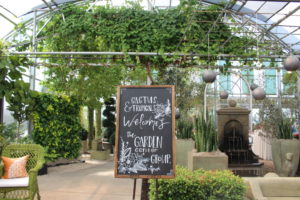
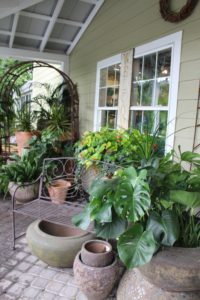
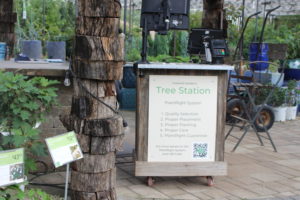
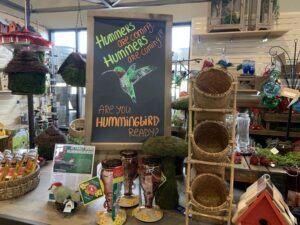

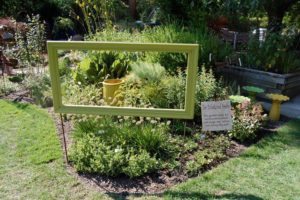
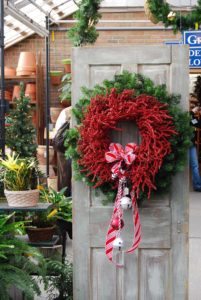
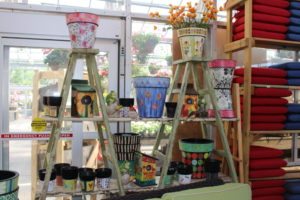



 Videos
Videos





